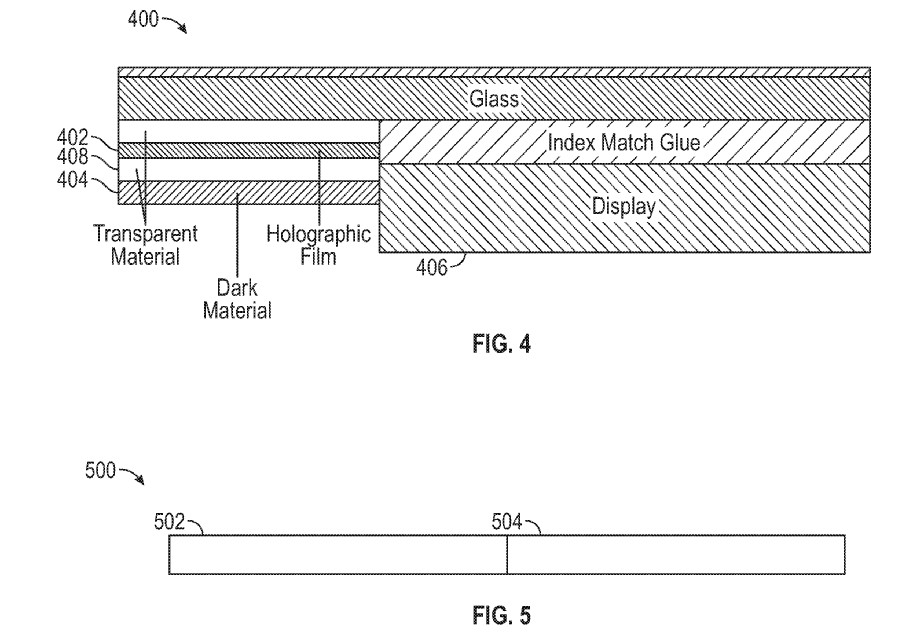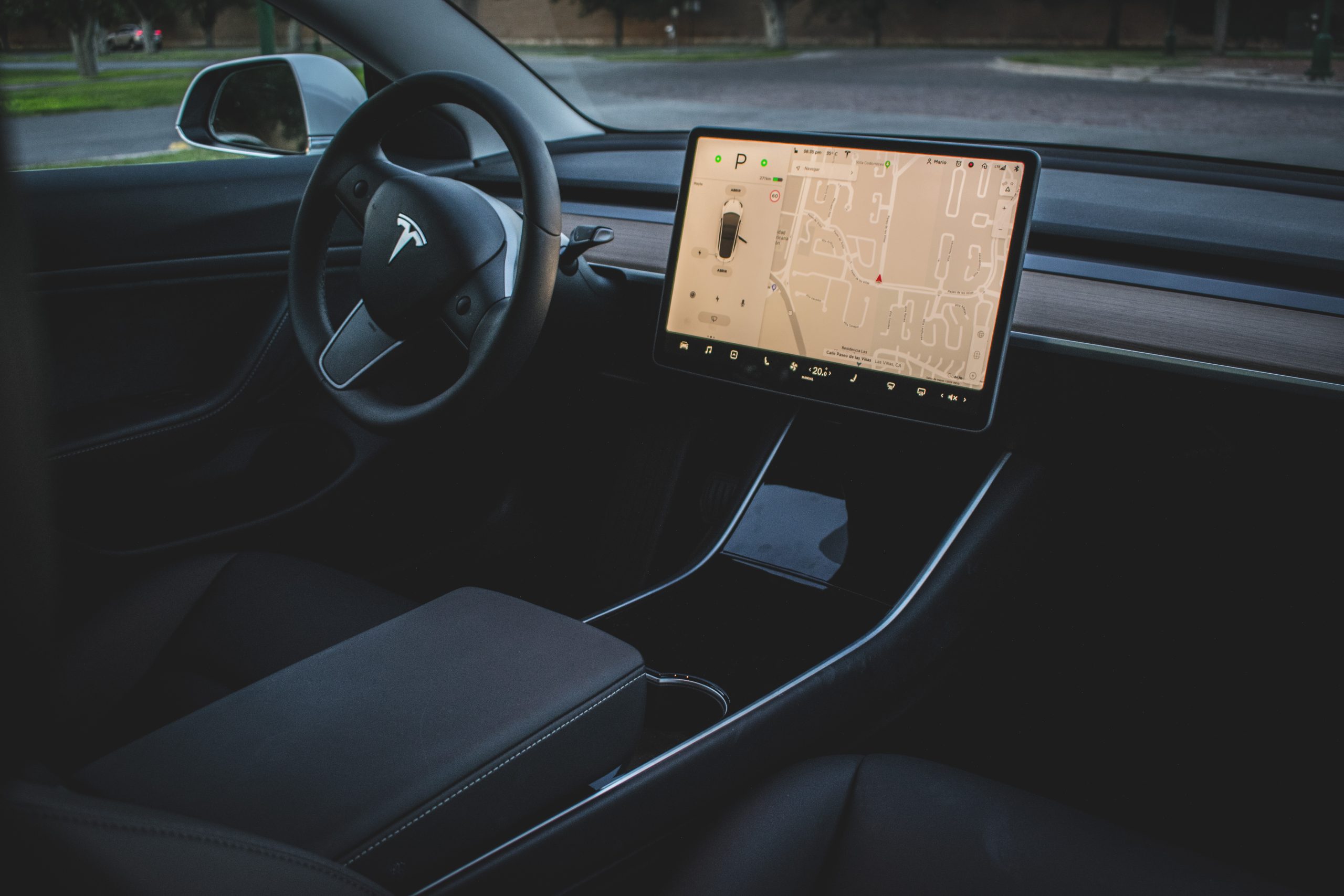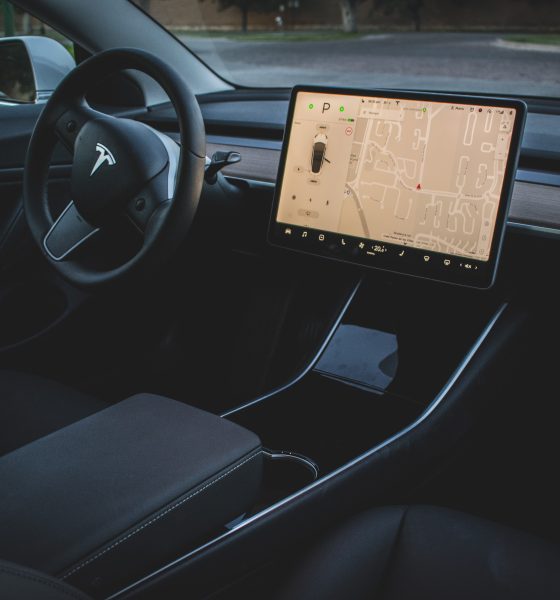The user experience of Tesla’s electric cars is centered mostly on the vehicles’ large, high-resolution displays. Coupled with custom software that provides a quick, smartphone-like experience, Tesla’s screens in its vehicles are already among the best in the auto industry. But in the spirit of the company’s habit of constant innovation, it appears that Tesla is looking to improve the quality of its displays even more.
A recently published patent from the electric car maker, titled “Holographic Decorated Glass for Screen Color Matching,” outlines a way for the electric car maker to improve the viewing angles of its vehicles’ displays. In the patent, Tesla notes that “because display screens typically have a periodic micro-structure (e.g., a pixelated structure), the color of the display screen may be dependent on the angle at which a viewer is looking at the display screen.” This results in viewing angles that have significant room for improvement, even among high-quality screens.
“The non-displaying portions of the device may be unable to match this angular color dependence of the display screen, resulting in a readily visible boundary between the display screen and the non-displaying portions of the device. Accordingly, there is a need for better color integration between the displaying portions of a device and the non-displaying portions of the device,” Tesla wrote.

To address this, Tesla opted to utilize a pigmented frame and index match glue to coat its vehicles’ screens, as well as a holographic glass panel. By adopting these techniques, Tesla expects to provide its vehicles with a screen that can offer optimal viewing angles for all passengers. This is especially useful when paired with the company’s entertainment features such as Tesla Theater or Tesla Arcade, which are accessible when a vehicle is on Park.
Tesla describes its use of index match glue and holographic glass panels as follows.
“Index match glue 206 may change the perceived color and appearance of display 204 to match the color and appearance of surrounding frame 202 within a small range of viewing angles. For example, index match glue 206 may change the perceived color and appearance of display 204 to match the color and appearance of frame 202 within a range of viewing angles approximately normal to the surface of display 204. However, due to the angular dependence of the perceived color and appearance of display 204 (due to display 204 having a holographic structure resulting from the pixels of display 204), index match glue 206 may be unable to change the perceived color and appearance of display 204 to match the color and appearance of frame 202 within a broad range of viewing angles so that the boundary between frame 202 and display 204 is invisible to a viewer. Accordingly, with display 204 coated with index match glue 206 surrounded by frame 202, the boundary between frame 202 and display 204 may still be readily visible at certain viewing angles.”
“The directionality of the periodic structure of holographic film 402 may approximate or match the directionality of the periodic structure of display 406. For example, if display 406 includes a plurality of periodic features (e.g., pixels) oriented in a first direction (e.g., rectangles, triangles, or the like having a common orientation), holographic film 402 may include a plurality of periodic features oriented in the first direction. FIG. 5 shows exemplary system 500 in which the visibility of a boundary between display 504 and a surrounding frame including a holographic structure (here holographic glass panel 502) may be reduced or eliminated over a broad range of viewing angles. In exemplary system 500, a periodic structure is formed on holographic glass panel 502 directly. For example, laser etching on holographic glass panel 502 may produce the periodic structure responsible for the holographic effect of holographic glass panel 502. Holographic glass panel 502 may include holographic structures formed in a variety of other ways, including ablation, etching, deposition processes, and the like.”
The full text of Tesla’s “Holographic Decorated Glass for Screen Color Matching” patent could be viewed here.
A color-matched display with optimal viewing angles might be a rather minor aspect of a vehicle, but for connected cars such as Teslas, it is these little things that make a difference in user experience. A car that boasts some of the most advanced automotive tech available in the auto segment today, after all, deserves a screen that is on par with some of the best mobile devices on the market.
Tesla’s display design outlined in its recently published patent can come in handy as well, particularly as the electric car maker introduces more updates to its fleet of vehicles. Among these is a “Fade Mode,” which Elon Musk has hinted at in the past. While responding to a Twitter follower last year, Musk responded positively to the suggestion of adding an option that allows drivers to dim their vehicles’ display while a car is in motion. This, together with features like V10’s Joe Mode, could help make long trips in Tesla’s electric vehicles much more convenient for passengers.

News
Tesla aims to combat common Full Self-Driving problem with new patent
Tesla writes in the patent that its autonomous and semi-autonomous vehicles are heavily reliant on camera systems to navigate and interact with their environment.

Tesla is aiming to combat a common Full Self-Driving problem with a new patent.
One issue with Tesla’s vision-based approach is that sunlight glare can become a troublesome element of everyday travel. Full Self-Driving is certainly an amazing technology, but there are still things Tesla is aiming to figure out with its development.
Unfortunately, it is extremely difficult to get around this issue, and even humans need ways to combat it when they’re driving, as we commonly use sunglasses or sun visors to give us better visibility.
Cameras obviously do not have these ways to fight sunglare, but a new patent Tesla recently had published aims to fight this through a “glare shield.”
Tesla writes in the patent that its autonomous and semi-autonomous vehicles are heavily reliant on camera systems to navigate and interact with their environment.

The ability to see surroundings is crucial for accurate performance, and glare is one element of interference that has yet to be confronted.
Tesla described the patent, which will utilize “a textured surface composed of an array of micro-cones, or cone-shaped formations, which serve to scatter incident light in various directions, thereby reducing glare and improving camera vision.”

The patent was first spotted by Not a Tesla App.
The design of the micro-cones is the first element of the puzzle to fight the excess glare. The patent says they are “optimized in size, angle, and orientation to minimize Total Hemispherical Reflectance (THR) and reflection penalty, enhancing the camera’s ability to accurately interpret visual data.”
Additionally, there is an electromechanical system for dynamic orientation adjustment, which will allow the micro-cones to move based on the angle of external light sources.
This is not the only thing Tesla is mulling to resolve issues with sunlight glare, as it has also worked on two other ways to combat the problem. One thing the company has discussed is a direct photon count.
CEO Elon Musk said during the Q2 Earnings Call:
“We use an approach which is direct photon count. When you see a processed image, so the image that goes from the sort of photon counter — the silicon photon counter — that then goes through a digital signal processor or image signal processor, that’s normally what happens. And then the image that you see looks all washed out, because if you point the camera at the sun, the post-processing of the photon counting washes things out.”
Future Hardware iterations, like Hardware 5 and Hardware 6, could also integrate better solutions for the sunglare issue, such as neutral density filters or heated lenses, aiming to solve glare more effectively.
Elon Musk
Delaware Supreme Court reinstates Elon Musk’s 2018 Tesla CEO pay package
The unanimous decision criticized the prior total rescission as “improper and inequitable,” arguing that it left Musk uncompensated for six years of transformative leadership at Tesla.

The Delaware Supreme Court has overturned a lower court ruling, reinstating Elon Musk’s 2018 compensation package originally valued at $56 billion but now worth approximately $139 billion due to Tesla’s soaring stock price.
The unanimous decision criticized the prior total rescission as “improper and inequitable,” arguing that it left Musk uncompensated for six years of transformative leadership at Tesla. Musk quickly celebrated the outcome on X, stating that he felt “vindicated.” He also shared his gratitude to TSLA shareholders.
Delaware Supreme Court makes a decision
In a 49-page ruling Friday, the Delaware Supreme Court reversed Chancellor Kathaleen McCormick’s 2024 decision that voided the 2018 package over alleged board conflicts and inadequate shareholder disclosures. The high court acknowledged varying views on liability but agreed rescission was excessive, stating it “leaves Musk uncompensated for his time and efforts over a period of six years.”
The 2018 plan granted Musk options on about 304 million shares upon hitting aggressive milestones, all of which were achieved ahead of time. Shareholders overwhelmingly approved it initially in 2018 and ratified it once again in 2024 after the Delaware lower court struck it down. The case against Musk’s 2018 pay package was filed by plaintiff Richard Tornetta, who held just nine shares when the compensation plan was approved.
A hard-fought victory
As noted in a Reuters report, Tesla’s win avoids a potential $26 billion earnings hit from replacing the award at current prices. Tesla, now Texas-incorporated, had hedged with interim plans, including a November 2025 shareholder-approved package potentially worth $878 billion tied to Robotaxi and Optimus goals and other extremely aggressive operational milestones.
The saga surrounding Elon Musk’s 2018 pay package ultimately damaged Delaware’s corporate appeal, prompting a number of high-profile firms, such as Dropbox, Roblox, Trade Desk, and Coinbase, to follow Tesla’s exodus out of the state. What added more fuel to the issue was the fact that Tornetta’s legal team, following the lower court’s 2024 decision, demanded a fee request of more than $5.1 billion worth of TSLA stock, which was equal to an hourly rate of over $200,000.
Delaware Supreme Court Elon Musk 2018 Pay Package by Simon Alvarez
News
Tesla Cybercab tests are going on overdrive with production-ready units
Tesla is ramping its real-world tests of the Cybercab, with multiple sightings of the vehicle being reported across social media this week.

Tesla is ramping its real-world tests of the Cybercab, with multiple sightings of the autonomous two-seater being reported across social media this week. Based on videos of the vehicle that have been shared online, it appears that Cybercab tests are underway across multiple states.
Recent Cybercab sightings
Reports of Cybercab tests have ramped this week, with a vehicle that looked like a production-ready prototype being spotted at Apple’s Visitor Center in California. The vehicle in this sighting was interesting as it was equipped with a steering wheel. The vehicle also featured some changes to the design of its brake lights.
The Cybercab was also filmed testing at the Fremont factory’s test track, which also seemed to involve a vehicle that looked production-ready. This also seemed to be the case for a Cybercab that was spotted in Austin, Texas, which happened to be undergoing real-world tests. Overall, these sightings suggest that Cybercab testing is fully underway, and the vehicle is really moving towards production.
Production design all but finalized?
Recently, a near-production-ready Cybercab was showcased at Tesla’s Santana Row showroom in San Jose. The vehicle was equipped with frameless windows, dual windshield wipers, powered butterfly door struts, an extended front splitter, an updated lightbar, new wheel covers, and a license plate bracket. Interior updates include redesigned dash/door panels, refined seats with center cupholders, updated carpet, and what appeared to be improved legroom.
There seems to be a pretty good chance that the Cybercab’s design has been all but finalized, at least considering Elon Musk’s comments at the 2025 Annual Shareholder Meeting. During the event, Musk confirmed that the vehicle will enter production around April 2026, and its production targets will be quite ambitious.










